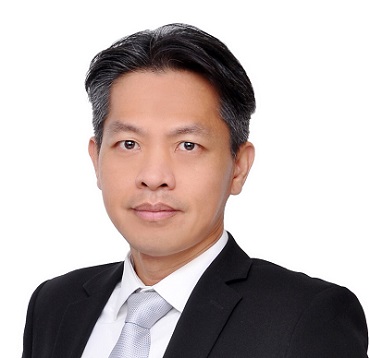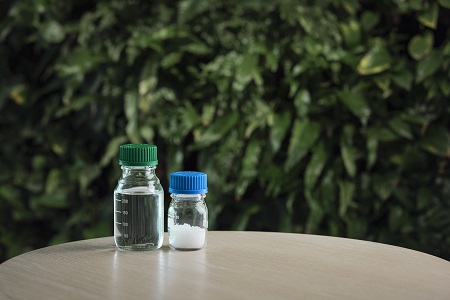The move of leading brand owners to raise the bio-based plastic content in their products has created increasing demand for sustainable additives. In this area, Clariant has launched sustainable material solutions aimed at supporting the transition towards a circular economy. In this issue, Mr. Darren Soo, Head of Sales Asia of BU Additives, shares how Clariant has been introducing bio-based additives and their benefits to the Asian market.
Clariant now offers sustainable material solutions including bio-based additives. What is the driving force or inspiration behind these solutions?
Mr. Soo: At Clariant, we see bioplastics as an important component towards reaching a circular economy as they help to transition current consumption away from the ‘make, use, dispose of’ model, and we are taking a holistic approach to this challenge. Our EcoCircle initiative supports the transition from a one-way plastics value chain to a circular plastics economy by going beyond a simple product focus, looking at the entire value chain, and identifying the most sustainable and viable solutions for a circular plastics economy. This includes the development of cutting-edge additives and biopolymers, and alliances to push the expansion of bioplastics. In addition to plastic waste, climate change is one of the biggest challenges we face, and biopolymers also help everyone in the plastics value chain reduce CO2 emissions and their carbon footprints.

Mr. Darren Soo, Head of Sales Asia, BU Additives, Clariant (Greater China, Shanghai)
Are these bio-based Clariant products now available in Asia?
Mr. Soo: Bioplastics have come a long way since their widespread introduction in the 1970’s but it is true that in many applications they still fall behind petroleum-based plastics when it comes to physical properties. This is something that we are working on at Clariant with business partners, such as Floreon. By integrating the benefits of Clariant’s additives with Floreon’s proprietary PLA material solutions, our exciting new collaboration aims to open up additional possibilities for plastic manufacturers and brand owners to consider biopolymers as a viable, low carbon footprint alternative to fossil-based plastics for both single-use and durable applications. Markets set to benefit from the new enhanced grades include rigid and flexible packaging, electrical & electronic equipment, hygiene products, consumer goods and automotive.
Our additives really differentiate biopolymers while still preserving the environmental benefits. They can protect mechanical properties and ensure better heat aging performance and UV stability throughout the biopolymer lifetime. They provide properties such as enhanced processing through a larger window of processability and better thermal stability and promote higher productivity via shorter cycle times.
I can give you several examples. First, Clariant’s fully sustainable, practically 100% renewable, non-food competing bio-additives solutions – our Vita labelled products – offer multiple processing and end-product enhancements to PLA. Second, Licocare® RBW Vita lubricants, based on rice bran wax, allow increased production rates by reducing the drag on the polymer during processing, thus helping to maintain proper surface aesthetics. This same exterior lubrication phenomenon also allows easier mould release, which mean less down time and fewer production delays when used in rapid, multi-cavity injection moulding applications. Additionally, as the Licocare® RBW Vita products are long-chain esters, they have excellent miscibility in biopolymers, like PLA-based blends. This typically means they maintain excellent clarity, have almost no effect on colour, and do not show negative effects on polymer integrity. And, third, the micronized version, Ceridust® 1060 Vita, enables superior pigment dispersion in biopolymers, which means fewer breaks at the spinneret when forming fibres and ultimately more durable fibres in textiles.
Clariant`s bio-based additives product portfolio is available in APAC. Being sustainable and delivering performance at the same time attracts very positive interest from market.
What are the major steps undertaken by Clariant to ensure stable supply despite the coronavirus pandemic?
Mr. Soo: To ensure supply during the pandemic, Clariant has adopted rules and policies to ensure the health and well-being of its employees, customers, and suppliers. Thus, the spread of the coronavirus within the global workforce of Clariant could be limited and the overall impact, both economically and socially were mitigated. While most of our global production network normally operates thanks to the continued onsite presence of our skilled workforce, Clariant has introduced a phased roadmap for office presence under increased safety measures that can be flexibly adapted to the respective local infection situation.
Clariant's Global and Country Emergency Management organisations continuously monitor the situation and follow the instructions of governments as well as of local authorities. Compliance with all measures that protect the health of our employees and business partners is of utmost importance in our company's daily business.
Moving forward, what upcoming trends and developments do you see in as far as bio-based material solutions are concerned, post-pandemic?
Mr. Soo: At Clariant we understand that if we are going to drive sustainability throughout the plastics value chain then our additives need to be accessible and affordable to our customers. So, for example, Clariant’s Licocare® RBW Vita products are priced competitively to existing ester waxes and lubricants as well as having other potential benefits such faster production rates, or improved dispersion which allows for less pigment to be used for the same effect.

Clariant partners with Neste to launch renewable olefin feedstock based additives
It’s true that due to the economic impact of the Covid-19 pandemic, the market may be looking for cheaper solutions/materials. Therefore, biopolymers will be challenged in terms of cost, due to the large availability of fossil-based polymers at competitive prices. On the other hand, two interesting issues have emerged. First, the pandemic has shown the importance of supply chains in rapidly adapting to emerging needs and situations. This can create opportunities for new technologies and potentially new ways to design products, for example in food/beverage packaging, medical and hygiene products, medical equipment, and lightweight commercial vehicles. Second, the pandemic has highlighted how much we rely on nature and, for example, the World Economic Forum has launched its Great Reset Initiative, calling on the need for global stakeholders to cooperate in simultaneously managing the direct consequences of Covid-19 and improve the state of the world. At this time, everyone in the plastics value chain has a pivotal opportunity to consciously move towards bioplastics. Collaborations like the one Clariant and Floreon have announced are helping to contribute to this global Great Reset.
Does Clariant have plans to expand in Asia?
Mr. Soo: Clariant believes that our development will be decided in Asia, especially in China. Since 2016, we have developed a dedicated strategy for China, to bring China business “from Fringe to Core”, and so far has received sound payback. In Q3 2020, sales in Asia rose in local currency, underpinned by very strong growth in China (+ 27 % in local currency) and India.
Clariant China has demonstrated great resilience during challenging environment. From our H1 report, we are proud that our sales in China increased by 17% in Q2. We’ve been gradually expanding our footprints in China through new manufacturing plants, joint ventures, acquisitions and also a brand-new regional operation headquarters and R&D centre – the One Clariant Campus in Shanghai targeted to be in operation within 2020. In the past 2 years, we have invested two new Additives facilities in Zhenjiang which are offering solutions for the Plastics, Coating & Inks industry; formed partnership with Hebei Tiangang to produce high-end polymer additives. In 2020, our new Catalysts production site broke ground in Jiaxing, East China. Indonesia is also among the focused growth country for Clariant. In 2019, a new supply base with over 1,000 tonnes storage capacity for oil production customers in Bojenogoro, Indonesia was announced. And more capital investment projects are in the pipelines.
Mr. Darren Soo
Head of Sales Asia, BU Additives
Clariant (Greater China, Shanghai)
Tel: +86 21 2248 3147
Fax: +86 21 2248 3485
Website: www.clariant.com














